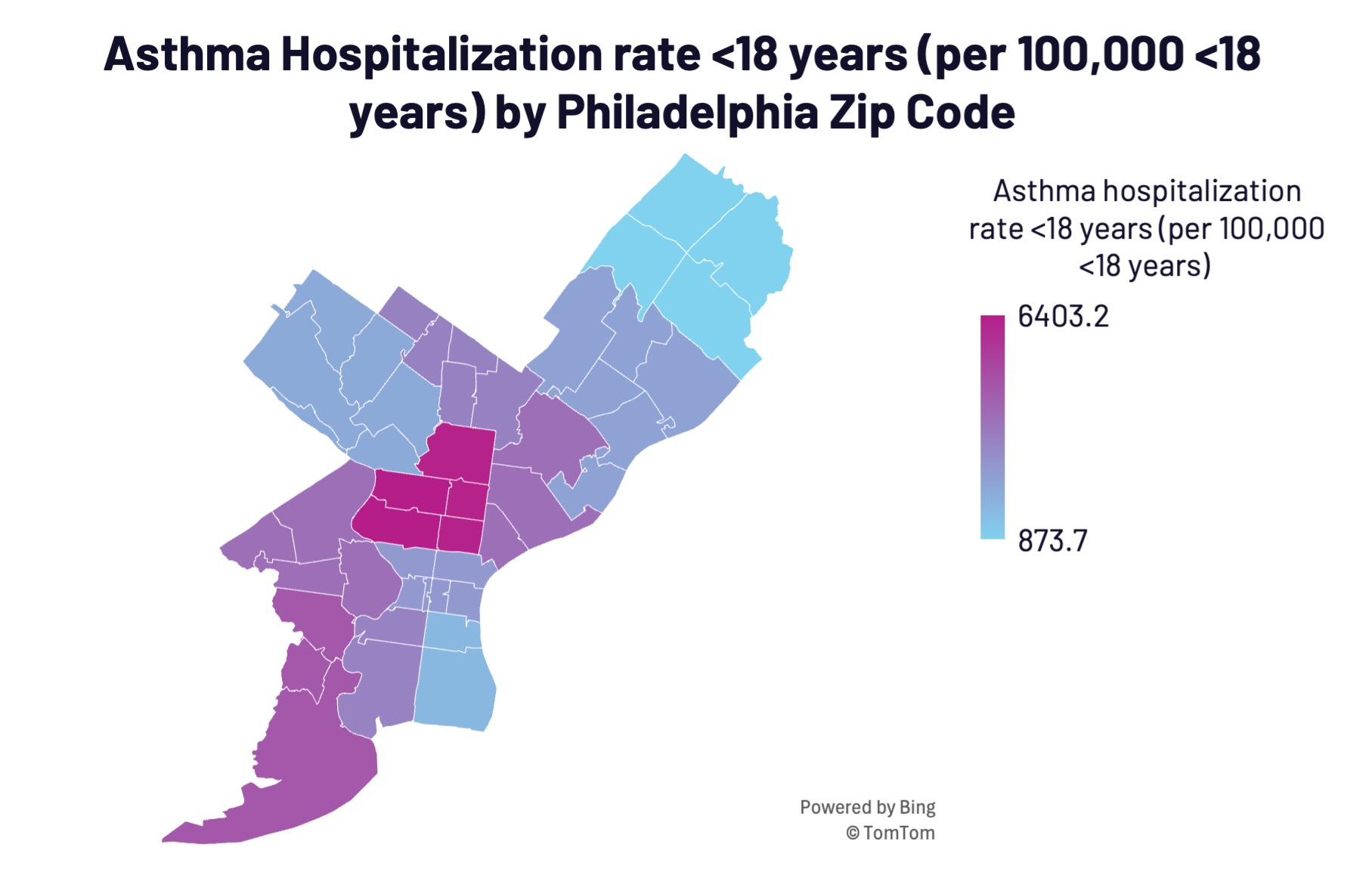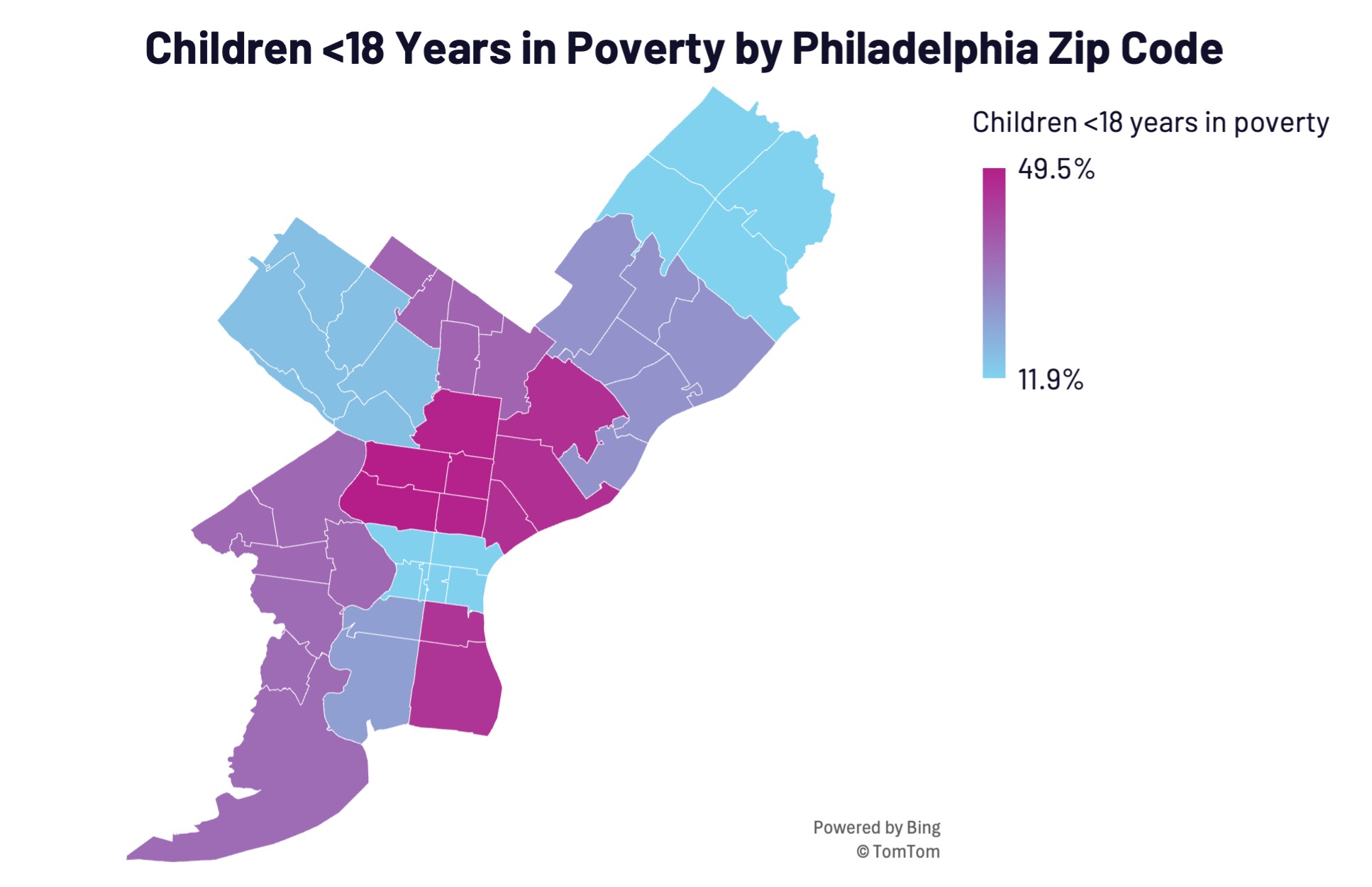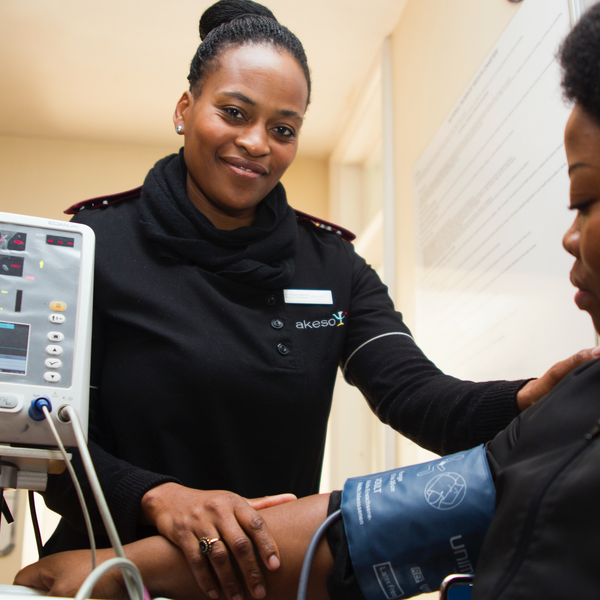Maternal, Infant, and Child Health includes the delivery of healthcare services and healthcare outcomes from pregnancy through early childhood. Whole person healthcare for birthing individuals, infants, and children requires comprehensive medical and psychological health care, cultural, and social resources.
During community conversations in the 2025 Regional Community Health Needs Assessment, birthing parents in Philadelphia County expressed concerns related to support for families facing poverty, food insecurity, and limited childcare options. In addition, Black women and people living with disabilities expressed concern related to bias and limited culturally competent care options. Programs offering direct financial support, improved prenatal education, and perinatal mental health services have been well-received in the community and represent important strides in improving maternal, infant, and child health outcomes.
 Maternal Health
Maternal Health
Pregnancy-Related Deaths, Severe Maternal Morbidity Rate (per 10,000), Access to Prenatal Care, and Depression Among Birthing People
 Infant Health
Infant Health
Infant Mortality Rate (per 100,000 live births), Percentage of Preterm Births Out of Live Births, and Percentage of Low Birthweight Births Out of Live Births
 Child Health
Child Health
Asthma Hospitalization Rate < 18 years (per 100,000 < 18 years) and Percentage of Children Living in Poverty
Key Metrics in Philadelphia
Severe maternal morbidity (SMM) includes life-threatening and non-life-threatening complications related to labor and delivery. The leading causes of SMM between 2016 and 2022 were acute renal failure, hemorrhage complications, respiratory complications, sepsis, infection, pulmonary edema/acute heart failure, eclampsia, and other complications.
SMM rates vary across Philadelphia zip codes, with many of the highest rates found in neighborhoods with the highest rates of poverty and chronic health conditions.
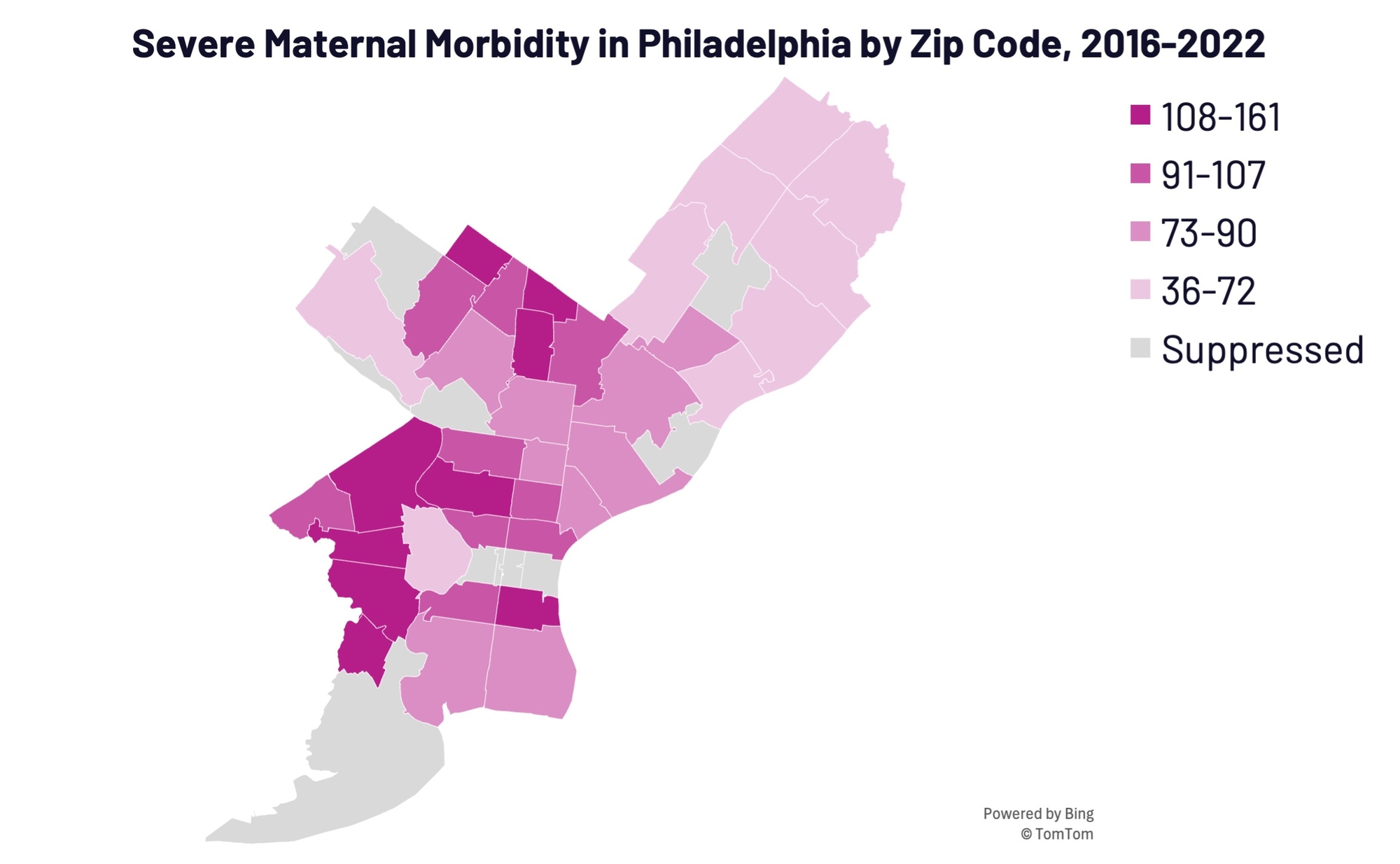
Source: Weinbrom S, Huynh M, Mehta A, Kallem S. (2024). Severe Maternal Morbidity in Philadelphia, 2016-2022. Philadelphia Department of Public Health.

Source: Weinbrom S, Huynh M, Mehta A, Kallem S. (2024). Severe Maternal Morbidity in Philadelphia, 2016-2022. Philadelphia Department of Public Health.
Non-Hispanic Black birthing people have the highest rate of SMM compared to all other race/ethnicity groups, with a 61 percent higher rate of SMM compared to Non-Hispanic White birthing people.
Overall, there are 31 percent more low birthweight births in Philadelphia compared to the national average (11.2 to 8.2, respectively). Among Philadelphians, Non-Hispanic Black infants have the largest percentage of live births with low birthweight, which includes a 66 percent higher rate compared to Non-Hispanic White infants.
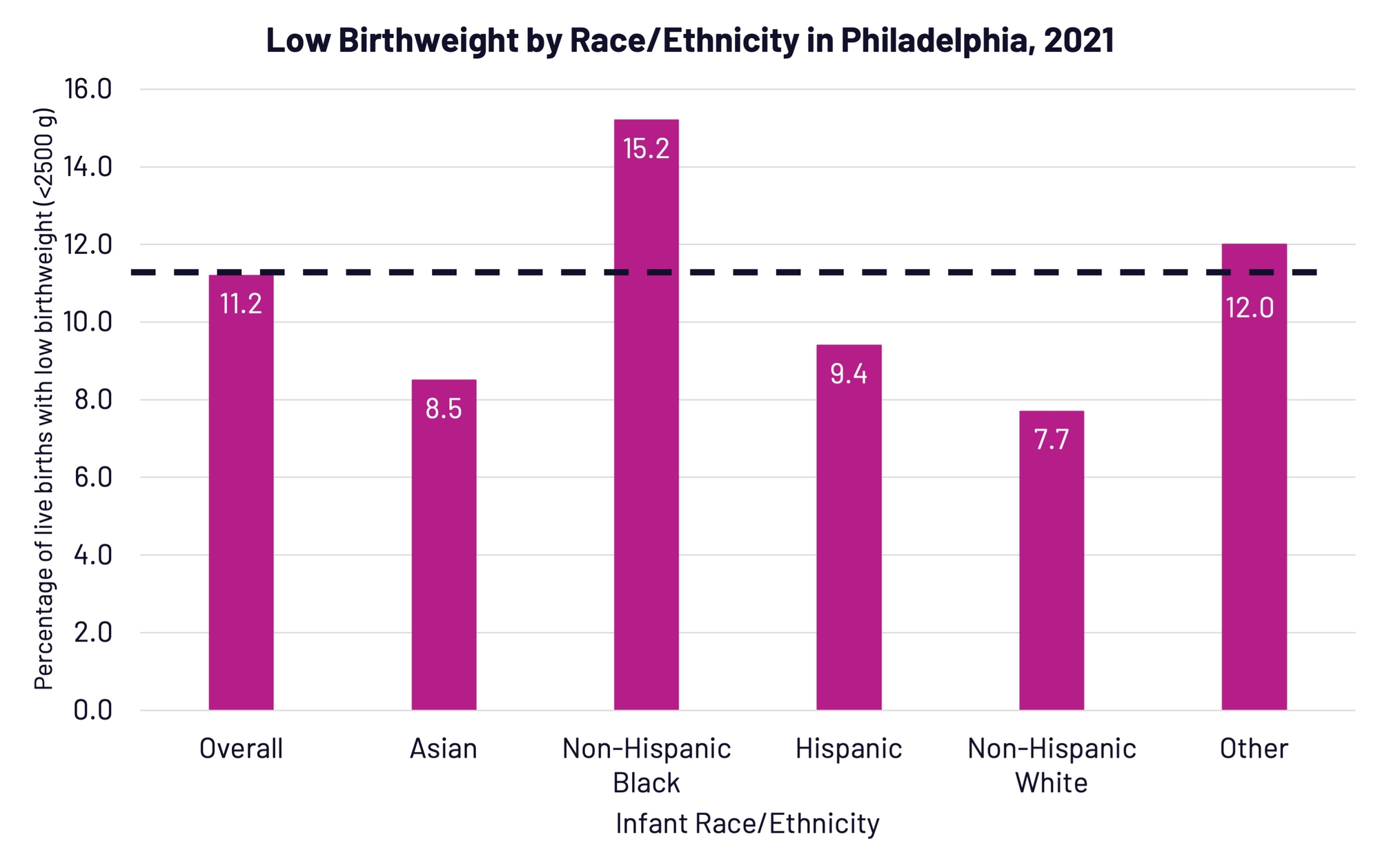
Source: Robert Wood Johnson Foundation City Health Dashboard, 2025.
Childhood asthma contributes to missed school days and high healthcare utilization, including ED visits and hospitalizations. The highest rates of ED visits for childhood asthma are concentrated in regions of the city with higher percentages of childhood poverty, with the highest rates measured in North Philadelphia.
A Comprehensive Approach to Reducing Disparities
Improving maternal, infant, and child health outcomes requires a comprehensive care plan that addresses individual and community challenges and barriers.
Disparities in maternal, child, and infant health are driven by biopsychosocial factors. These factors include challenges related to geographic disparities in access to care, transportation limitations, insurance and immigration status barriers, limited representation and cultural competency, bias and discrimination, and limited integration of perinatal mental health services.
In the 2025 Regional Community Health Needs Assessment, community conversations with Philadelphia birthing people suggest communities are most interested in holistic maternal and infant health programs that address financial and emotional needs of birthing people and families, services that address the complexities of infertility, and additional community-based supportive care programs, including physical and mental health education.

